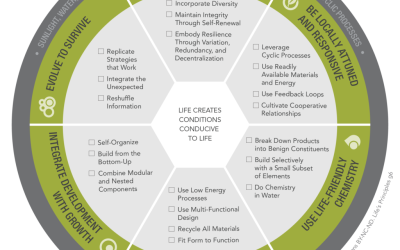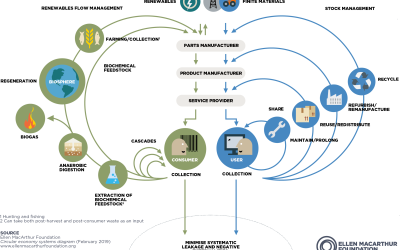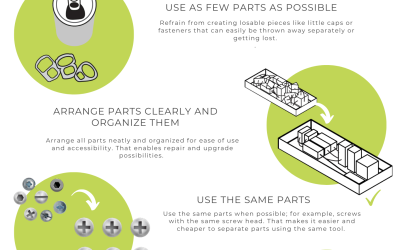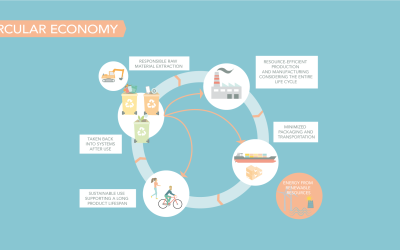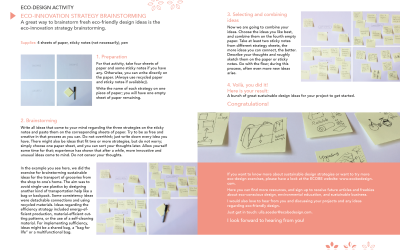The term “climate neutrality” has become a buzzword in sustainability conversations. But what exactly does climate neutrality mean, and why is it so crucial in our actions against the climate crisis?
Let’s dive into the concept of climate neutrality and discover what it means and does not mean.
Life’s Principles: Unlocking Nature’s Design Secrets through Biomimicry
At the core of biomimicry lie the Life’s Principles, a set of universal design guidelines derived from the patterns and strategies found in nature. These principles serve as a framework for sustainable and regenerative solutions, offering insights into how organisms have adapted and flourished over time. By emulating these principles, we can create solutions that are efficient and resilient and in harmony with the natural world.
Double Materiality
The new stricter requirements for sustainability reporting resulting, among others, from the European Corporate Sustainability Reporting Directive (CSRD) demand to define and report about the most material topics of a business with a double materiality perspective. But what does this mean? Double materiality implies that not only the impact of the planet and society on a company is considered significant, but also the impact of the company on the planet and society.
ISO 26000 Guideline for social responsibility
ISO 26000 provides guidance on a wide range of social responsibility issues, including human rights, labor practices, the environment, fair operating practices, consumer issues, and community involvement and development. The standard encourages organizations to take a comprehensive and integrated approach to social responsibility, rather than addressing issues in isolation.
The butterfly diagram of the circular economy
You may already know the concept of a technical and biological cycle as a framework for the circular economy. For transitioning to a circular economy, the two main cycles are divided into smaller loops which show the processes that enable materials and products to stay in circulation or sagely biodegrade. We will have a closer look at how these cycles work with the help of the famous so-called butterfly diagram.
What is Cradle to Cradle?
When thinking about transitioning to a circular economy, a big question in your head might be, how can I implement these principles in practice? When discussing implementing circularity, people often refer to Cradle to Cradle. So what’s it all about?
10 tips for circular design
10 Tips for circular design. The goal of circular design is for products, components, or materials to stay in closed loops as long as possible so we can use them theoretically forever. These ten basic principles help to achieve this goal.
Circular economy
Have you heard that our current economic system should transform into a circular economy, and you have wondered what this means?
When discussing the transition to a circular economy, the first necessary step is understanding what a circular economy is.
Sustainability Strategies Brainstorming
Three main strategies exist for converting existing business practices to more sustainable forms. These strategies are an excellent tool for brainstorming sessions and finding sustainable solutions. Take action and try this brainstorming exercise.
Three common sustainability strategies
There exist three main strategies for converting existing business practices to more sustainable forms:
1. Efficiency strategy
2. Consistency Strategy „Circular economy. “
3. Sufficiency Strategy „Wellbeing instead of well having. “
These strategies are an excellent tool for brainstorming sessions and finding sustainable solutions.
The triangle of Sustainability Brainstorming
A common model to show the complex concept and challenges of Sustainability is the triangle of Sustainability. The Sustainability triangle is a model for developing a sustainable society based on the fact that both ecological and economic, as well as social goals, need to be implemented simultaneously.
Sustainable Development Goals Strategy Wheel
In 2015 the United Nations released a shared worldwide blueprint for peace and prosperity for people and the planet, now and in the future. At its heart are the 17 Sustainable Development Goals (SDGs), which are an urgent call for action. You can use the SDGs as a helpful tool to start with sustainability in your business with the sustainability goals strategy wheel.
Let´s create together
For limiting climate change and the transformation to a more sustainable future, it is necessary to rethink consumption and production patterns and decouple well-being from environmental degradation. For that purpose, nearly everything needs to be redesigned in a more eco-friendly, life-supporting way. We use Biomimicry and Design thinking for that purpose.
